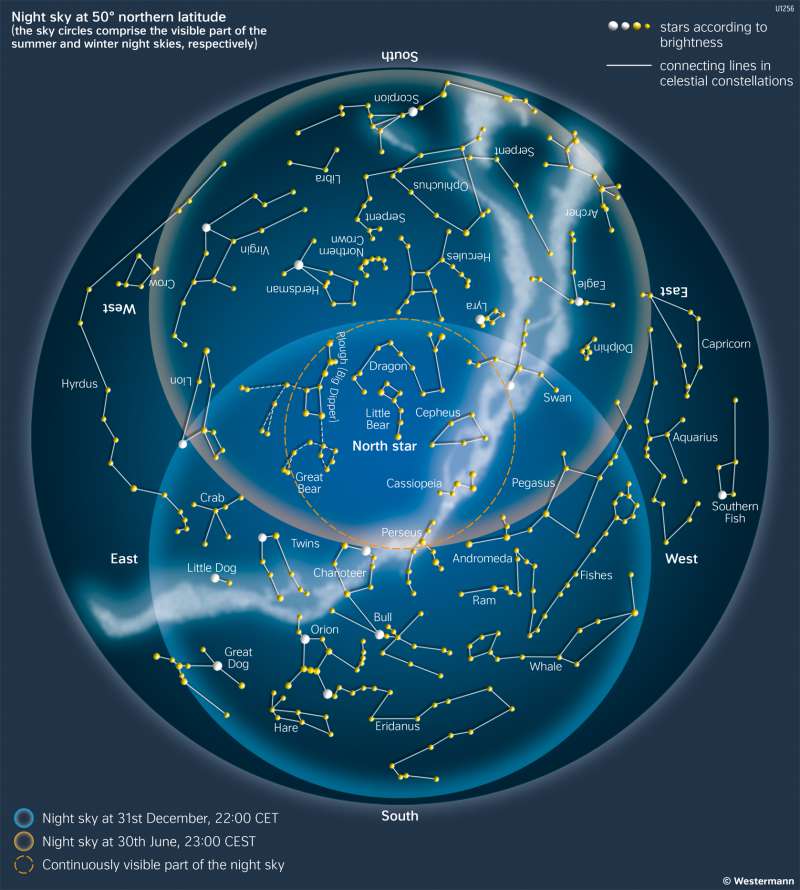The night sky in European winters and summers
978-3-14-100890-6 | Page 11 | Ill. 10

Seasonal change of the visible night sky
The star map shows all the bright and medium-bright stars that can be seen from our latitudes. Since the Earth revolves around the Sun during the course of the year, the Sun shines on other parts of the sky in its annual orbit. For winter and summer, the visible parts of the sky are marked by circles rotated 180° around the Pole Star. For spring you have to think of an equally large circle rotated 90° to the left on the star map, and for autumn a circle rotated 90° to the right. The star map must be turned so that the south is on the bottom. The next step is to look at the sky in this direction. Then, in the middle of the circle, the zenith is exactly above the observer, behind him is north, to the left is east and to the right is west, just as it can be observed in the sky. The circle of the circumpolar stars is also pictured on the map in dashed lines. They are so close to the celestial north pole (Pole Star) that they change position in the evening during the year, but never set. These constellations also include the prominent Big Dipper (Sky Dipper) as part of the Great Bear, which therefore remains visible all year round. With it, the first orientation in the starry sky begins.




